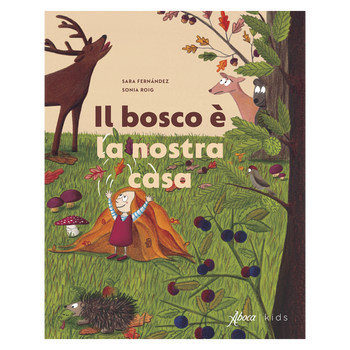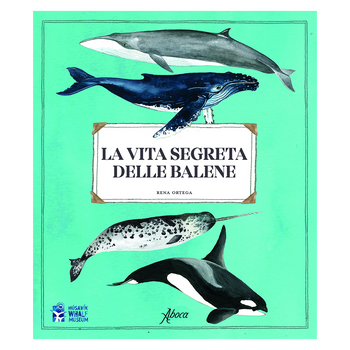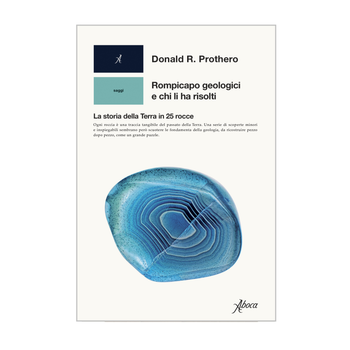Un capolavoro della letteratura medico-botanica, arricchito dai colori e dalle miniature di un grande maestro.
Aboca Edizioni presenta la riproduzione facsimilare di I discorsi di P. A. Mattioli, nella celebre stampa a figure grandi che Valgrisi impresse a Venezia nel 1568. L'esemplare da cui Aboca ha attinto, oggi custodito alla Biblioteca Alessandrina di Roma, è noto per i magnifici decori di Gherardo Cibo, il quale, oltre a colorare le incisioni, ne completò gli sfondi con suggestivi paesaggi scaturiti dalla sua fertile immaginazione.
Dalla nota di Flavia Cristiano :«L'edizione ci offre, in tutta la straordinaria bellezza del suo corredo artistico, un testo che documenta il cammino della scienza e del pensiero dell’uomo; un volume che, pur se stampato in una serie di molti esemplari, costituisce, nella sua individualità, un'opera d'arte singolare e inimitabile; il tassello di una storia che collega fra loro un illustre botanico, un pittore amante di botanica, un principe studioso e un papa bibliofilo, protagonisti di una vicenda più affascinante di un romanzo; un esempio emblematico dell’importanza insostituibile della ricerca che scova nei depositi del passato e ci restituisce la nostra storia attraverso il fascino immediato e senza tempo della bellezza».
Così, in una lettera datata 24 giugno 1565, Mattioli si esprimeva invece riguardo l'arte di Cibo e, in particolare, le sue figure botaniche: «in vero me par che siano tanto vive et naturali, che più non vi si possa desiderare; et massimamente che vi si discerne una leggiadria che dà loro l'ornamento di quei paesetti ameni, che non si discerne nelle naturali. Onde le dico che se ben da molti e diversi luoghi mi sono state mandate piante colorite, tanta differenza vedo tra queste e quelle, quanto si vede dal piombo all'argento o per dir meglio all'oro» (Biblioteca Comunale di Siena, cod. miscell. D, vii, 2. c. 15 r.).
Ai due volumi contenenti la riproduzione dei Discorsi si affianca un volume di commento, ove sono presi in esame l'importanza dell'opera di Mattioli nella storia della botanica e della farmacia moderne, i passaggi di proprietà del volume decorato da Gherardo Cibo, le vicende biografiche di Mattioli, Cibo e di Giorgio Liberale da Udine, autore delle xilografie impresse nel 1568, la storia della tipografia valgrisiana.
- Premessa di Valentino Mercati
- A cura di Duilio Contin e Lucia Tongiorgi Tomasi
- Contributi di Flavia Cristiano, Enrica Lozzi, Duilio Contin, Lucia Tongiorgi Tomasi, Giorgio Mangani, Paolo Santini, Piera Medeghini Bonatti, Ilaria Andreoli, Marco Bresadola.
I discorsi di P. A. Mattioli con le miniature e gli acquerelli di Gherardo Cibo fu realizzato per la biblioteca personale di Francesco Maria II Della Rovere, duca di Urbino. Dopo la morte di questi, avvenuta nel 1631, il volume, unitamente ad altri libri a stampa, confluì per volontà testamentaria nel convento dei Caracciolini di Casteldurante. Da qui, con atto del 22 dicembre 1666, fu trasferito nelle sale di quella che sarebbe divenuta nel giro di pochi mesi la Biblioteca Alessandrina di Roma, dove oggi è censito attraverso la segnatura Rari 278.
I facsimili ad uso professionale di Aboca, opere fondamentali a disposizione di tutti. Leggendarie edizioni e splendidi manoscritti, selezionati nelle biblioteche di tutto il mondo, sono stati riprodotti attraverso tecniche di stampa d'avanguardia e corredati da ampi e puntuali apparati critici.
A masterpiece of medical-botanical literature, enriched by the colours and miniatures of a great master.
Aboca Editions presents the reproduction of the I Discorsi di P. A. Mattioli, in the famous large print version published by Valgrisi in Venice in 1568. The specimen used by Aboca, now held at the Alessandrina Library in Rome, is renowned for the magnificent decorations by Gherardo Cibo, who, in addition to colouring the engraving, completed the background with evocative landscapes produced by his fertile imagination.
From the comment by Flavia Cristiano: "This edition offers us, in all the extraordinary beauty of its artistic accompaniment, a text that documents the path of science and of human thought; a volume that, even if printed in many copies, constitutes, in its individuality, a unique and inimitable work of art; the piece of a story that connects a famous botanist, a painter with a love of botany, an erudite prince and a bibliophile pope, protagonists of an adventure that is more fascinating than a novel: an emblematic example of the irreplaceable importance of a research that uncovers the layers of the past and brings us back our history through the immediate and timeless allure of beauty".
Furthermore, this is how Mattioli expressed himself concerning Cibo's art and, in particular, his botanical illustrations, in a letter dated 24 June 1565: "It really seems to me that they are so alive and natural, that one could not ask for anything better; and most importantly that one can perceive an elegance afforded to them by the decoration with pleasant village landscapes that cannot be felt in the presence of natural images alone. For this reason I tell you that even though I have received coloured drawings of plants from many different places, there is such a difference between these and the former, as one can see between lead and silver or, even better, between lead and gold" (Siena Municipal Library, cod. miscell. D, vii, 2. c. 15 r.).
The two volumes containing the reproduction of the Discourses are accompanied by a commentary volume in English language, examining the importance of Mattioli's work in the history of modern botany and pharmacy, the changes of ownership of the volume decorated by Gherardo Cibo, the biographies of Mattioli, Cibo and Giorgio Liberale da Udine, author of the xylographs printed in 1568 and the history of Valgrisi's typography.
- Foreword by Valentino Mercati
- Edited by Duilio Contin and Lucia Tongiorgi Tomasi
- Contributions by Flavia Cristiano, Enrica Lozzi, Duilio Contin, Lucia Tongiorgi Tomasi, Giorgio Mangani, Paolo Santini, Piera Medeghini Bonatti, Ilaria Andreoli, Marco Bresadola.
I Discorsi di P. A. Mattioli with the miniatures and watercolours by Gherardo Cibo was conceived for the personal library of Francesco Maria II Della Rovere, Duke of Urbino. After his death in 1631, according to his will, the volume, together with other print books, was passed onto the Caracciolini convent in Casteldurante. From there, with deed dated 22 December 1666, it was transferred to the halls of what in the space of a few months would become the Alessandrina Library of Rome, where today it is registered by shelf mark Rari 278.
Aboca's facsimiles for professional use: seminal works accessible to everybody. Legendary editions and splendid manuscripts, selected from libraries around the world, have been reproduced using cutting edge printing techniques and accompanied by vast and accurate critical apparati.






















